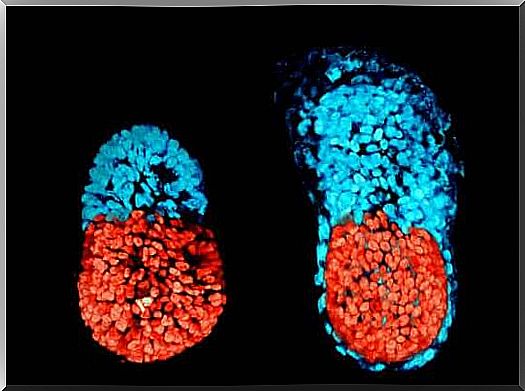Everything You Need To Know About The Fetus In Fetus
The anomaly known as fetus in fetus is characterized by the fact that there are two twins: one of them grows, while the other lodges inside the first, like a parasite. This almost always lodges in the abdominal region, but it has also been found in other parts of the body.

The first known case of fetus in fetus dates from 1800. Since then, around 200 cases have been reported worldwide. The rarity of this anomaly and its geographical dispersion have prevented in-depth studies of this phenomenon.
The discoverer of this strange condition was Meckel. He gave it the name fetus in fetus to refer to cases where a parasitic twin is found inside its healthy sibling, which serves as its host.
It is very common for this disease to be diagnosed initially as a painless lump. 89% of cases were detected within the first 18 months of life. However, there are also many cases where the diagnosis is late.
Fetus in fetus is a rare or orphan disease

Fetus in fetus is one of those diseases that have been referred to as orphan, rare, or minority diseases. So far, around 7,000 diseases have been identified in this category. Among the 10 rarest is the fetus in fetus.
Only around 200 cases are documented worldwide. It is estimated that this abnormality occurs in 1 in 500,000 births. In most cases, the diagnosis is made during childhood. However, it has also been found in adults up to age 47.
It is a variant of parasitic twins
Fetus in fetus is a variant of the phenomenon known as parasitic twins. It is a state where there are two identical twins and one of them has a much smaller body than the other.
In this case, the host twin, or native twin, allows the parasite to survive, since it does not have any organs of its own. The fetus in fetus has also been considered an extreme case of Siamese twins.
The fetus in the fetus is an accident

We do not know the exact cause of this phenomenon. We just know that this is an accident that occurs at some point in the formation of the zygote. For some reason, the twins don’t separate completely and stay together somewhere in their bodies.
All of this happens before the embryo is formed. What follows is that one of the twins is developing normally, while the other atrophies. Thus, he stays inside the healthy twin and is completely dependent on him for his survival.
The fetus in fetus has a strange appearance
It is common for the host fetus to die before birth. If not, the baby has a lump in the area where the parasitic twin is. In 80% of cases, this happens in the abdominal region. However, it is also possible for the parasitic twin to lodge in the scrotum, skull, etc.
The fetus in fetus is a humanoid. Once extracted, it is enveloped in a membrane which makes it similar to a chicken egg. However, it is extremely tough and quite large. When released from its shell, the parasitic twin appears white. He died during this procedure, as he was completely dependent on the healthy twin.
The fetus in fetus and the teratoma
A teratoma is an encapsulated tumor that contains tissue and even organ debris. There are references to teratomas containing hair, teeth, bones and even hearts, although this is quite rare.
Due to its characteristics, teratoma is sometimes confused with fetus in fetus. The researchers established differential criteria between one and the other. Teratomas can become malignant, while the fetus in the fetus cannot. Likewise, to speak of fetus in fetus, there must be a spine.
It represents a risk for the host
The parasitic twin is a potential risk for the healthy twin. It becomes a burden that she carries in her body and does not perform any function. The twin can weigh up to 1 kilogram. He has no brain, but an empty cranial cavity. It also doesn’t have a chest cavity, but rather has solid flesh.
The risk also comes from the location of the parasitic twin. As we have seen, it is almost always located in the abdomen. However, there are cases when it is found in the oral cavity (6), in the skull (7-9), in the liver (10) and other dangerous places. Thirteen cases have been reported in which more than two parasitic twins coexist.









